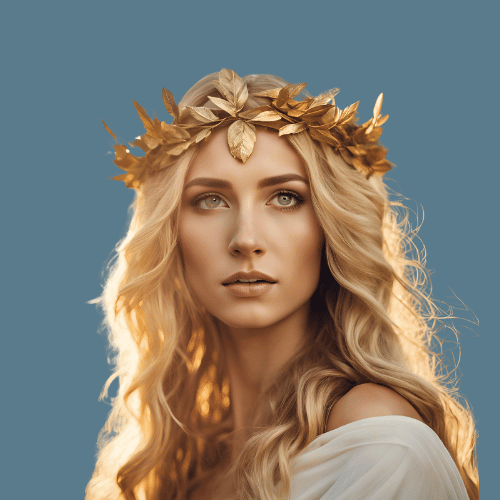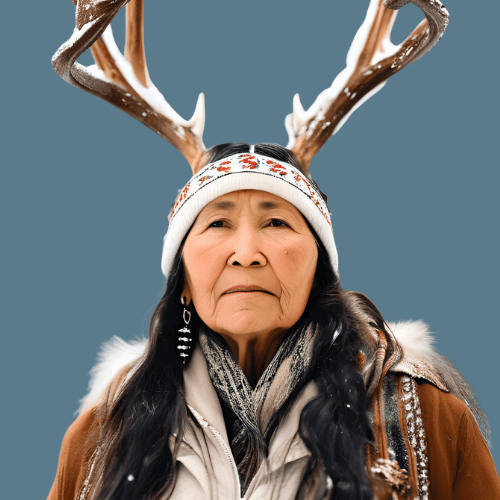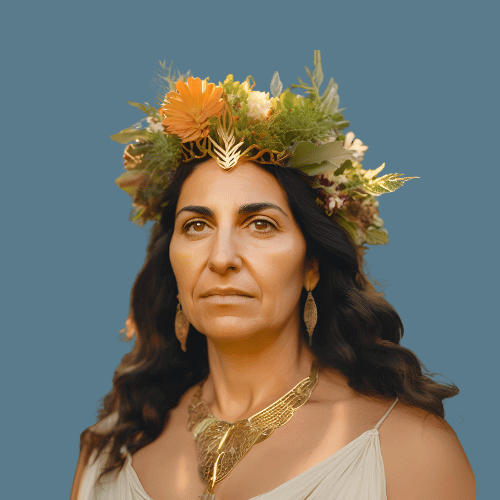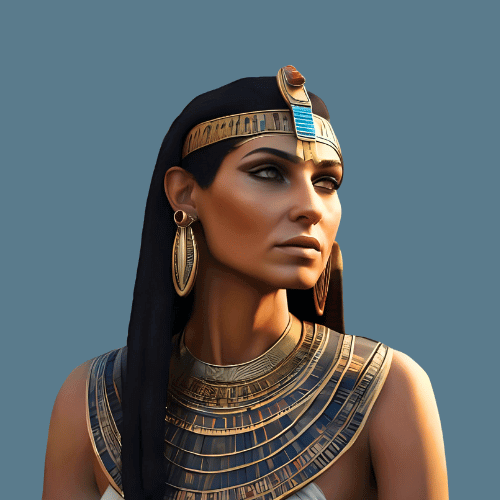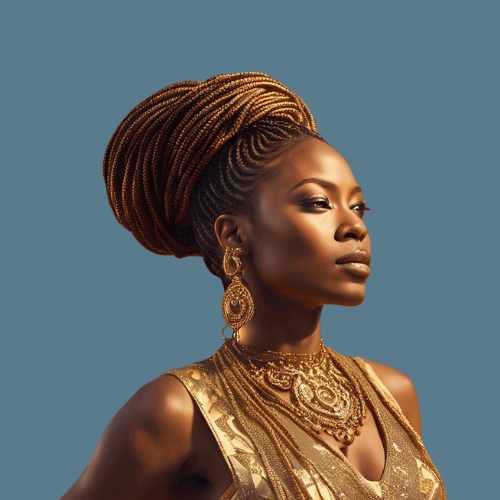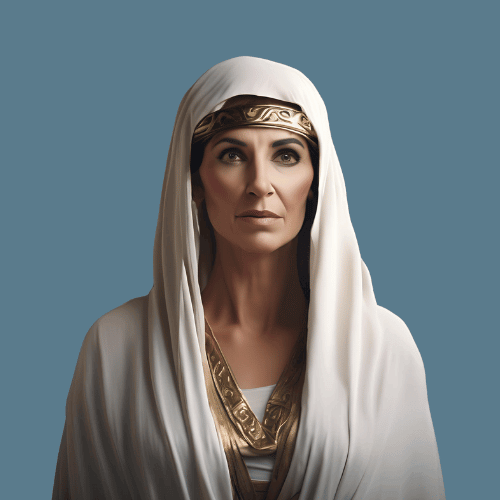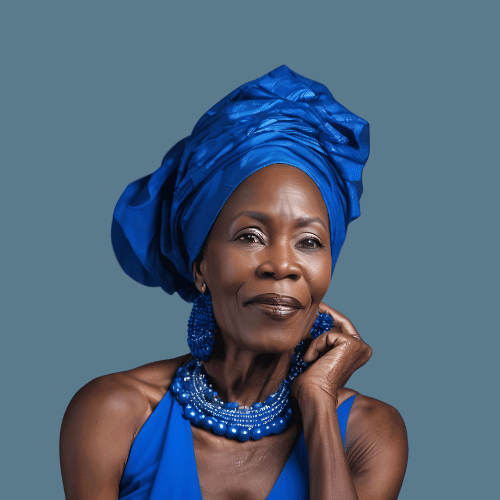Paganism and Witchcraft Resources
Recommended books, articles, and trusted communities drawn from my own practice and experience, and shared to support beginners, developing practitioners, and those seeking understanding.
About these resources
This page brings together Paganism and Witchcraft resources for anyone curious about these paths — whether you’re just beginning, deepening your practice, or seeking a broader understanding. You’ll find recommended books, articles, and trusted community.
This is a living collection of resources and reflections. I update it as I discover, learn, and grow — so check back for new additions.
Recommended books
Here you’ll find a wide range of books on Paganism and Witchcraft — from foundational classics to modern guides and critical voices that invite reflection and growth. Some are timeless works best read in their historical context; others reflect contemporary voices and practices. All are included because they’ve been meaningful in shaping my path and the wider Pagan movement.
The titles are organised by topic to help you browse what interests you most. Each entry includes a short note on why I recommend it, along with a sense of who it may serve best — whether you’re just beginning, deepening your practice, well along the path, or simply curious to understand more.
This section brings together works that trace the history and development of Paganism and Witchcraft. These books offer insight into how modern practice took shape and why it continues to look the way it does today.
Paganism: A Very Short Introduction — Owen Davies (2011)
An accessible overview of Paganism past and present, from ancient traditions to modern revivals. Davies combines historical scholarship with clear explanations, making this a useful entry point for understanding Pagan identity and practice in a broad context.
Best for: Newcomers and readers looking for a concise introduction to Paganism.
Witchcraft: A Very Short Introduction — Malcolm Gaskill (2010)
A compact and accessible survey of witchcraft, from ancient beliefs to modern Pagan revivals. Clear, balanced, and engaging, it’s ideal for readers wanting a reliable starting point without the depth of heavier academic works.
Best for: Beginners and anyone seeking a concise overview of witchcraft history.
A History of Witchcraft: Sorcerers, Heretics & Pagans — Jeffrey B. Russell & Brooks Alexander (updated edition 2024)
An authoritative survey of witchcraft from antiquity to the present, covering ancient magic, the witch-craze, the rise of modern Wicca, and contemporary trends. Though sceptical of Paganism, it remains a valuable reference for historical context.
Best for: Readers seeking a concise, scholarly history of witchcraft.
The Triumph of the Moon: A History of Modern Pagan Witchcraft — Ronald Hutton (1999)
The most influential academic history of modern Pagan Witchcraft. Meticulously researched, it traces the cultural and literary currents that shaped Wicca and Paganism in Britain. Sometimes debated by practitioners, but essential for understanding the historical landscape.
Best for: Advanced practitioners, scholars, and anyone interested in the history of modern Paganism.
Drawing Down the Moon: Witches, Druids, Goddess-Worshippers, and Other Pagans in America — Margot Adler (1979, rev. 2006)
A pioneering ethnographic account of Pagan communities in the United States, capturing practitioners’ voices and experiences. While dated in places and US-centric, it remains one of the most important works documenting modern Paganism.
Best for: All levels; invaluable historical context and community insight.
Here you will find works on Wicca, from approachable introductions to detailed explorations of initiatory practice. They reveal the breadth of Wiccan traditions and offer guidance to those interested in this path.
Traditional Wicca: A Seeker’s Guide — Thorn Mooney (2018)
A practical and candid introduction to initiatory, lineage-based Wicca. While it doesn’t include rituals or spells, it gives seekers a clear picture of what Traditional Wicca is — and what it is not.
Best for: Beginners curious about Traditional Wicca; developing practitioners considering coven-based paths.
Lid Off the Cauldron: A Wicca Handbook — Patricia Crowther (1981)
Part memoir, part instruction, this book offers a glimpse into the early decades of Gardnerian Wicca from one of its leading High Priestesses. While dated in places, it provides valuable insight into Wiccan history and practice from a first-generation voice.
Best for: Developing and advanced practitioners; readers seeking an initiatory perspective within Wicca.
From running covens and circles to teaching, mentoring, and priest/esshood, these works examine the challenges of leadership, group dynamics, and community care.
Wicca Covens: How to Start and Organize Your Own — Judy Harrow (1999)
A thoughtful exploration of how covens function and evolve, with keen insight into power, leadership, and group dynamics. Harrow highlights the roles covens can play — from worship and training to support and community — while offering practical guidance on communication, conflict resolution, and teaching.
Best for: Seekers curious about coven life and practitioners interested in the psychology of group leadership.
Covencraft: Witchcraft for Three or More — Amber K (1998)
A practical and comprehensive guide to forming and sustaining covens and circles. Amber K covers leadership, teaching, ritual design, conflict resolution, and the challenges of group dynamics with warmth and clarity.
Best for: Practitioners considering leadership roles or anyone curious about the inner workings of covens.
Spiritual Mentoring: A Pagan Guide — Judy Harrow (2002)
A pioneering look at mentorship within Pagan traditions, drawing on counseling skills, teaching methods, and Wiccan priesthood. Harrow addresses boundaries, ethics, and the sacred responsibility of guiding others on their spiritual journey.
Best for: Practitioners stepping into roles as teachers, mentors, or clergy within Pagan communities.
This section offers practical guides to spellcraft, ritual, folk magic, and contemporary Witchcraft. These books support everyday practice and encourage deeper exploration of the art of magic.
Wicca: A Guide for the Solitary Practitioner — Scott Cunningham (1988)
A modern classic that opened the door for countless solitary Wiccans, presenting practice in a clear, accessible way. While rooted in its time, Cunningham’s approach remains influential, and his wider body of work is equally worth exploring.
Best for: Beginners seeking a gentle, practical introduction to Wicca and solitary practice.
Buckland’s Complete Book of Witchcraft — Raymond Buckland (1986)
One of the most popular introductory manuals of the late 20th century, often referred to as “Uncle Bucky’s Big Blue Book.” Structured like a workbook, it provides lessons in Wiccan history, ritual, and magical practice. Its format makes it accessible, though some material feels dated.
Best for: Beginners and developing practitioners who enjoy structured learning and want a solid grounding in Wicca and Witchcraft.
The Craft: A Witch’s Book of Shadows — Dorothy Morrison (2001)
Dorothy Morrison, an Elder in the Georgian Tradition, brings her down-to-earth style to this engaging, accessible guide. Blending beliefs, tools, techniques, and rituals with a poetic touch, she offers a well-organised foundation for solitary practice. Some elements feel dated, but it remains a valuable resource for those beginning their exploration of Wicca and Witchcraft.
Best for: Beginners and developing practitioners seeking an accessible, engaging guide. Of special interest to Georgian Wiccans.
Wicca Practical Magic: Getting Started with Magical Herbs, Oils, & Crystals — Patti Wigington (2017)
Although written in a Wiccan frame, this is really a broad, approachable guide to everyday witchcraft. It covers herbs, oils, crystals, simple spells, meditations, and rituals, focusing on accessible practice rather than initiatory tradition.
Best for: Beginners interesed in accessible, everyday magic.
Spellcrafting: Strengthen the Power of Your Craft by Creating and Casting Your Own Unique Spells — Arin Murphy-Hiscock (2020)
A clear and accessible guide to the principles of spellcraft, covering ethics, tools, techniques, correspondences, energy raising, and empowering components. Includes simple spells for practice, while encouraging creativity and offering frameworks for designing unique, personalised magic.
Best for: Beginners learning the principles of spellcraft who want to move beyond pre-written spells into crafting their own.
Psychic Witch: A Metaphysical Guide to Meditation, Magick & Manifestation — Mat Auryn (2020)
An excellent resource for witches ready to move beyond the basics and strengthen their inner skills. Auryn offers clear explanations and a wide range of exercises in meditation, shielding, purification, and working with elemental and planetary energies. Thoughtfully organised and highly practical, it provides a cohesive path for developing both psychic sensitivity and magical ability.
Best for: Developing practitioners looking to deepen their Craft through disciplined practice.
Six Ways: Approaches & Entries for Practical Magic — Aidan Wachter (2018)
A concise yet wide-ranging guide that distills animist, occult, and folk-magic influences into a cohesive practice. Wachter emphasizes devotion, integrity, and relationship with the world as the heart of magic, covering spirits, offerings, sigils, trance, and more. While accessible, it resonates most with those who already have some grounding in magical basics.
Best for: Developing practitioners seeking a holistic, relational approach to magic.
Casting Sacred Space: The Core of All Magickal Work — Ivo Dominguez Jr. (2012)
A practical and versatile guide to creating sacred space, applicable across many Pagan and magical traditions. Dominguez blends clear instructions with esoteric insight, offering tools that strengthen both ritual effectiveness and personal spiritual practice.
Best for: Practitioners seeking a deeper understanding of sacred space and circle work.
Four Elements of the Wise: Working with the Magickal Powers of Earth, Air, Water, Fire — Ivo Dominguez Jr. (2021)
An in-depth guide to working with the elements as living powers in magic and ritual. Dominguez offers practical techniques, meditations, and frameworks that deepen both personal practice and ritual work.
Best for: Practitioners of all levels who want to engage more profoundly with elemental magic.
Elements of Ritual: Air, Fire, Water, and Earth in the Wiccan Circle — Deborah Lipp (2024)
A detailed exploration of Wiccan ritual structure, unpacking each step of circle-casting with clarity and insight. Lipp combines practical guidance with theological reflection, making this a valuable resource for anyone seeking to deepen their ritual practice.
Best for: Developing practitioners ready to move beyond beginner spellbooks into the mechanics of ritual.
These works focus on the responsibilities of practice and help practitioners navigate questions of power, responsibility, and community care, ensuring that what we do aligns with our values.
When, Why … If: An Ethics Workbook for Pagans — Robin Wood (1996)
A practical workbook that guides readers through ethical questions in Pagan life with exercises, reflections, and scenarios. While some of its assumptions — such as the universality of the Wiccan Rede and Threefold Law, or dated views influenced by the Satanic Panic era — no longer reflect today’s Pagan landscape, it remains a useful tool for personal reflection and discussion.
Best for: Beginners and practitioners who want a structured way to explore Pagan ethics, especially in a Wiccan framework.
An’ Ye Harm None: Magical Morality and Modern Ethics — Shelley Rabinovitch & Meredith MacDonald (2004)
An exploration of Pagan ethics framed through the Wiccan Rede and broader Pagan values. The authors discuss responsibility, integrity, and community in clear, approachable language. Some parts feel dated, but it remains a useful resource.
Best for: Beginners and practitioners seeking an introduction to Pagan ethics beyond spellcraft.
Pagan Consent Culture: Building Communities of Empathy & Autonomy — Christine Hoff Kraemer & Yvonne Aburrow, eds. (2016)
An anthology that applies the principles of consent to Pagan and magical communities. Essays explore boundaries, power, sexuality, leadership, and pastoral care, offering practical tools for creating healthier and more accountable spaces.
Best for: Practitioners, leaders, and community-builders committed to fostering consent-based practice.
These books offer inspiration and frameworks for crafting meaningful rituals that honour change, continuity, and the cycles of life and death.
Creating Circles & Ceremonies: Rituals for All Seasons and Reasons — Oberon Zell-Ravenheart & Morning Glory Zell-Ravenheart (2006)
A well-organised compendium of essays, ritual outlines, chants, invocations, seasonal celebrations, and rites of passage drawn from the Church of All Worlds tradition. Rich in creativity and variety, it offers inspiration and ready-to-use material for both groups and individuals.
Best for: Practitioners of all levels looking for a versatile resource on ritual design and celebration.
Handfasting and Wedding Rituals — Raven Kaldera & Tannin Schwartzstein (2003)
A practical and diverse collection of Pagan wedding ceremonies, blending tradition with inclusivity. The book offers ready-to-use rituals and guidance for creating meaningful handfastings that reflect different paths and relationships.
Best for: Couples, clergy, and coven leaders planning or officiating Pagan weddings.
The Pagan Book of Living and Dying — Starhawk & M. Macha Nightmare, with the Reclaiming Collective (1997)
A compassionate and practical resource for death, dying, and grief within Pagan contexts. It weaves together rituals, prayers, essays, and personal stories, offering guidance for supporting the dying, honouring the dead, and tending to the bereaved.
Best for: Pagans seeking ritual and spiritual support around death, dying, and remembrance.
This section gathers books written from Australian and New Zealand perspectives, offering insight into how Paganism and Witchcraft have taken root in the Southern Hemisphere. These works explore history, anthropology, and lived practice, grounding the Craft in local cultures, landscapes, and communities.
The Witches of Oz — Julia Phillips (1992)
A pioneering study of the emergence of Wicca and Pagan Witchcraft in Australia. Phillips documents key figures, groups, and events, providing one of the earliest overviews of how Witchcraft took root in the Southern Hemisphere.
Best for: Students of Pagan history and those curious about the development of Australian witchcraft.
Witchcraft and Paganism in Australia — Lynne Hume (1997)
An anthropological study of contemporary Witchcraft and Paganism in Australia, based on ethnographic fieldwork. Hume explores ritual, belief, and community life, offering an academic but accessible snapshot of the movement.
Best for: Practitioners and students seeking a scholarly perspective on Australian Paganism.
Sex, Death and Witchcraft: A Contemporary Pagan Festival — Douglas Ezzy (2003)
An in-depth sociological study of a Pagan festival in Australia, exploring ritual, symbolism, and the negotiation of identity within community. Ezzy highlights how Pagans engage with themes of sexuality, mortality, and transformation.
Best for: Readers interested in contemporary Pagan festivals and the sociology of religion.
The Witch of Kings Cross — Nevill Drury (2002)
A biography of Rosaleen Norton, Australia’s most infamous witch and occult artist. Drury traces her life, art, and magical practice, situating Norton as a countercultural icon whose influence shaped Australian esotericism.
Best for: Readers interested in biography, occult history, and the intersection of art and witchcraft.
Here you will find works on goddess devotion, feminist perspectives, and eco-spiritual approaches to Witchcraft. They show how Pagan spirituality often intertwines with women’s empowerment and earth-centred practice.
The Holy Book of Women’s Mysteries — Zsuzsanna Budapest (1979)
A foundational text of feminist Witchcraft, blending ritual, goddess devotion, and political activism. Both influential and controversial, it shaped Dianic Witchcraft and feminist spirituality in the late 20th century.
Best for: Developing and advanced practitioners interested in the history and development of feminist Witchcraft.
The Spiral Dance: A Rebirth of the Ancient Religion of the Goddess — Starhawk (1979)
A landmark text in feminist Witchcraft and Goddess spirituality, blending ritual, myth, and political activism. Its accessible style and powerful vision helped launch the Reclaiming tradition and inspired generations of practitioners. Some sections reflect 1970s scholarship, but its influence remains profound.
Best for: All levels; practitioners interested in Goddess spirituality and the roots of the Reclaiming tradition.
When God Was a Woman — Merlin Stone (1976)
An influential feminist classic that explores the idea of ancient matriarchal religions and their suppression under patriarchy. Though many of its historical claims have since been challenged, the book remains significant for understanding the roots of modern Goddess spirituality.
Best for: Developing practitioners and readers interested in feminist history, mythology, and the origins of the Goddess movement. Beginners may find it confusing without additional context.
This section explores the role of ancestors and the spirit world. These books offer ways to honour lineage, strengthen connection, and work with spiritual allies.
Honoring Your Ancestors: A Guide to Ancestral Veneration — Mallorie Vaudoise (2019)
A clear and practical guide to connecting with ancestors through ritual, offerings, and daily devotion. Vaudoise’s approachable style makes it especially useful for those beginning ancestor work.
Best for: Beginners and developing practitioners exploring ancestor veneration.
Spirit Speak: A Comprehensive Guide to Connect Beyond the Veil — Ivo Dominguez Jr. (updated edition 2025)
A clear and practical guide to spirit communication, covering methods, ethics, and safe practices for connecting with the dead and other beings. Dominguez emphasises discernment and responsibility, making this a grounded resource for spirit work.
Best for: Practitioners seeking to develop skills in spirit communication with clarity and ethical awareness.
This section gathers books that have deeply influenced the way many of us understand spirituality, nature, and our place in the world. Some offer philosophy or science, while others share Indigenous perspectives that must be approached with respect, as they arise from lived cultural traditions.
Ishmael — Daniel Quinn (1992)
A philosophical novel that critiques civilisation through dialogue. Quinn challenges readers to question cultural narratives about progress, power, and humanity’s place in the world.
Best for: Newcomers to animist or ecological worldviews, or anyone open to rethinking dominant cultural stories.
Meditation for Beginners: A 22-Day How to Meditate Course — Vern Lovic (2016)
A straightforward, step-by-step introduction to meditation presented as a 22-day course. Its clear instructions and gradual approach make it an excellent foundation for building confidence and focus in practice.
Best for: Beginners looking to build a meditation practice.
The Hidden Life of Trees: What They Feel, How They Communicate — Peter Wohlleben (2015)
A popular science book that reveals the complex social networks of trees. Wohlleben’s storytelling highlights the intelligence and interconnectedness of forests, offering a living example of animism in nature.
Best for: Readers interested in ecology, science, and re-enchanting their view of the natural world.
The Spell of the Sensuous: Perception and Language in a More-than-Human World — David Abram (1996)
A philosophical exploration of perception, language, and our sensory relationship with the more-than-human world. Though sometimes dense, Abram’s insights are deeply resonant for animists and nature-based practitioners.
Best for: Developing practitioners seeking to deepen their understanding of animism and embodied experience.
The City Is a Labyrinth: A Walking Guide for Urban Animists — Sarah Kate Istra Winter (2021)
A short but rich guide to animist practice in urban settings. Winter encourages readers to engage with cities as living, spirited landscapes full of meaning and relationship.
Best for: Animists, Pagans, and polytheists looking to connect with the spirits of place in urban environments.
Sand Talk: How Indigenous Thinking Can Save the World — Tyson Yunkaporta (2019)
A profound and thought-provoking exploration of Aboriginal systems of knowledge. With humour and humility, Yunkaporta shares wisdom through story, philosophy, and reflection, challenging Western assumptions about culture and sustainability.
Best for: Practitioners ready to engage deeply with Aboriginall perspectives on culture, land, and relationship.
Pagan Theology: Paganism as a World Religion — Michael York (2003)
An academic but accessible study that frames Paganism as a global religious category. York explores common threads of polytheism, animism, and earth-centred spirituality across cultures and eras.
Best for: Advanced students and practitioners interested in theology, comparative religion, and Paganism’s place in global context.
Here you will find works on ceremonial magic that influenced Wicca and modern Witchcraft and continue to be of interest today.
The Golden Dawn — Israel Regardie (1937; expanded editions later)
A comprehensive collection of teachings, rituals, and initiatory practices from the Hermetic Order of the Golden Dawn. While not light reading, it preserves a system that has profoundly shaped modern magic, Wicca, and ceremonial traditions.
Best for: Advanced practitioners and researchers exploring the roots of modern Western occultism.
Magick in Theory and Practice — Aleister Crowley (1929)
One of Crowley’s central works, outlining his philosophy of Thelema and practical systems of ceremonial magic. Influential, complex, and often controversial, it remains a cornerstone of modern occultism.
Best for: Advanced practitioners and students of ceremonial magic interested in Crowley’s lasting influence.
Initiation Into Hermetics — Franz Bardon (1956)
A classic step-by-step manual of self-realisation within the Hermetic tradition, covering mental, astral, and physical exercises. Dense and demanding, it has profoundly influenced occult practitioners and magical training systems.
Best for: Advanced practitioners and students of Western esotericism. Of particular interest to Georgian Wiccans.
Condensed Chaos: An Introduction to Chaos Magic — Phil Hine (1995; rev. 2010)
An accessible and irreverent guide to chaos magic, emphasising flexibility, creativity, and results-oriented practice. While very different in tone from ceremonial magic, it has significantly shaped modern occultism and Pagan approaches to magic.
Best for: Developing practitioners curious about chaos magic or interested in modern innovations within Western esotericism.
The Sea Priestess — Dion Fortune (1938)
An occult novel weaving ritual, symbolism, and esoteric philosophy into a story of spiritual awakening and the sacred feminine. Fortune’s visionary fiction influenced Wiccan liturgy and the understanding of priestesshood.
Best for: Readers interested in esoteric fiction and the literary roots of Goddess spirituality and Wiccan ritual.
Here are works that invite reflection on Paganism and Witchcraft within a wider social and cultural context. Some explain our traditions clearly to outsiders, while others explore colonialism, cultural exchange, race, gender, and sexuality. Together, they challenge assumptions and encourage practitioners to think critically about how our paths engage with the wider world.
Wicca Demystified: A Guide for Practitioners, Family, and Friends — Bryan Lankford (2004)
Written with clarity for outsiders, newcomers, and the simply curious, this book explains Wicca’s beliefs and practices without sensationalism. It’s approachable and informative, making it a useful bridge between Pagan communities and the wider world.
Best for: Non-Pagans seeking understanding, and beginners looking for a straightforward introduction.
Witches Among Us: Understanding Contemporary Witchcraft and Wicca — Thorn Mooney (2024)
A clear, accessible introduction to contemporary Witchcraft and Wicca, written for both curious outsiders and new seekers. Mooney addresses common misconceptions while presenting an honest picture of modern Pagan practice and community.
Best for: Non-Pagans seeking understanding, and beginners looking for a thoughtful overview of contemporary Witchcraft.
This section includes influential works from earlier decades that shaped modern Paganism and Witchcraft. While some may now seem dated or are historically inaccurate, they remain essential for understanding the movement’s roots and the ideas that guided its growth.
La Sorcière — Jules Michelet (1862)
A romanticised 19th-century history of witchcraft, portraying the witch as a symbol of resistance and folk wisdom. Though not historically accurate, it powerfully influenced later cultural and spiritual visions of the witch.
Best for: Readers interested in cultural history and the roots of modern ideas about witchcraft.
Aradia, or the Gospel of the Witches — Charles Godfrey Leland (1899)
Presented as a text of Italian witch-lore, this book blends folklore, invention, and Leland’s own interpretations. While its authenticity is debated, it became hugely influential in the development of modern Witchcraft and Paganism.
Best for: Developing practitioners exploring the origins of modern myth.
The Witch-Cult in Western Europe — Margaret Murray (1921)
A groundbreaking but flawed study that argued the witch trials were evidence of a surviving pre-Christian fertility cult. While her theories have been thoroughly discredited, Murray’s work profoundly influenced modern understandings of witchcraft and inspired figures such as Gerald Gardner.
Best for: Developing and advanced readers studying historical context; not recommended for beginners.
Witchcraft Today — Gerald Gardner (1954)
The book that introduced Wicca to the public, written in Gardner’s eccentric but compelling style. It blends speculation, anthropology, and personal experience, laying the groundwork for modern Witchcraft.
Best for: Developing and advanced practitioners interested in Wicca’s origins.
The Meaning of Witchcraft — Gerald Gardner (1959)
Gardner’s second book, offering a more developed explanation of Wiccan beliefs, rituals, and worldview. Though dated, it provides insight into early Wicca.
Best for: Developing and advanced practitioners studying Wicca’s evolution.
The Night Battles: Witchcraft & Agrarian Cults in the Sixteenth & Seventeenth Centuries — Carlo Ginzburg (1966)
A seminal work of historical anthropology exploring the Benandanti, agrarian visionaries in northern Italy accused of witchcraft. Ginzburg’s study influenced later understandings of European folk magic and shamanic survivals. Dense but rewarding for those interested in deep history.
Best for: Advanced readers, practitioners, and scholars exploring historical witchcraft traditions.
King of the Witches: The World of Alex Sanders — June Johns (1969)
A sensationalised biography of Alex Sanders, founder of Alexandrian Wicca. Though inaccurate and coloured by its tabloid style, it helped shape Sanders’ public image and the popular perception of Witchcraft in the 1960s and 70s.
Best for: Developing and advanced readers interested in Alexandrian Wicca’s history and how it was represented in the media.
An ABC of Witchcraft — Doreen Valiente (1973)
A reference-style book covering key terms, figures, and concepts in Witchcraft. Written by one of Wicca’s most influential voices, it blends history, practice, and Valiente’s personal perspective.
Best for: All levels; a classic reference from a central figure in Wicca.
Witchcraft for Tomorrow — Doreen Valiente (1978)
Valiente’s practical guide to Witchcraft, combining her deep knowledge with a readable style. It includes rituals and insights that helped shape modern practice.
Best for: Beginners and developing practitioners seeking a historical yet practical introduction.
The Rebirth of Witchcraft — Doreen Valiente (1989)
Part autobiography and part history, this book provides an insider’s account from one of Wicca’s most influential voices. Valiente reflects on her experiences with Gardner and others, charting the growth of modern Witchcraft from the 1950s onward. Though personal and subjective, it is invaluable for understanding Wicca’s development from someone at its heart.
Best for: Developing and advanced practitioners interested in insider perspectives.
A Witches’ Bible: The Complete Witches’ Handbook — Janet & Stewart Farrar (1996; combines Eight Sabbats for Witches [1981] and The Witches’ Way [1984])
A comprehensive manual of Alexandrian Witchcraft, covering theology, ritual, and seasonal celebrations. While reflecting the era in which it was written, it remains one of the most detailed and influential practical texts of modern Wicca.
Best for: Developing and advanced practitioners seeking insight into Alexandrian practice and ritual structure.
A Grimoire of Shadows: Witchcraft, Paganism, & Magick — Ed Fitch (1996)
Originally circulated as The Pagan Way, this book became a key underground classic of Wicca and influenced many traditions, including Georgian Wicca. Some sections feel dated today, but it remains an important piece of Wiccan history.
Best for: Developing and advanced practitioners interested in Wiccan history. Of special interest to Georgian Wiccans.
About these recommendations.
This can never be a complete list. There are many excellent titles I recommend that don’t appear here, simply because the list isn’t exhaustive. Some books I haven’t read yet, some I’ve chosen not to include, and others may be too specialised or outside the focus of this page.
I wrote a blog entry about how I approach book recommendations more generally, which may give helpful context. And of course, you’re always welcome to contact me if you’d like to ask about a particular title or resource.
Fellow travellers
These are organisations, community groups, and practitioners that I know personally — people I collaborate with, learn from, celebrate with, and wholeheartedly recommend. Whether you’re seeking support, study opportunities, or inspiration, this is where I’d suggest you start. All recommendations are genuine, with no affiliate links.
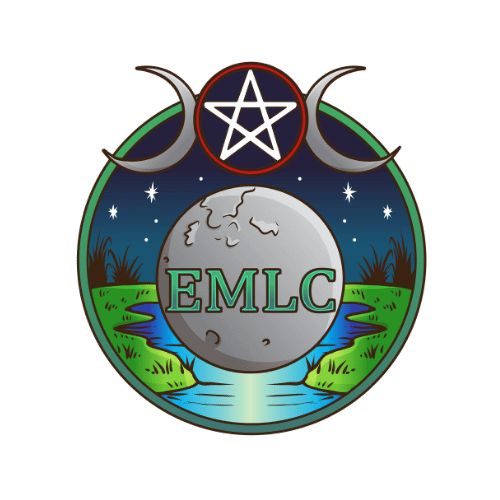
Everglades Moon Local Council (EMLC) is an affiliation of covens and solitary members of the Covenant of the Goddess (CoG) in Florida. If you’re a seasoned practitioner in Florida looking for community, consider connecting with EMLC.
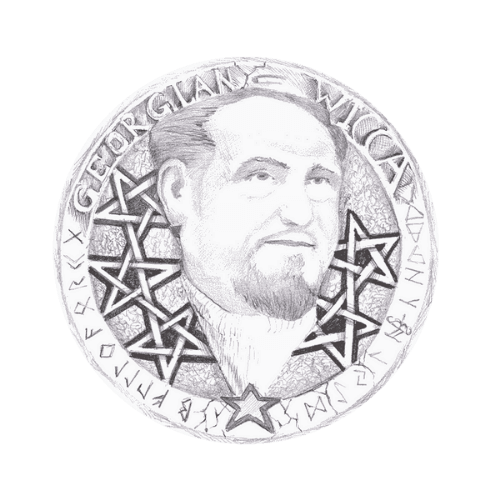
The Georgian Tradition of Wicca was founded in 1970 by George (Pat) Patterson, Zanoni Silverknife and Tanith in Bakersfield, California. I am an Elder High Priestess of the tradition and teach Georgian Wicca in Melbourne, Australia.
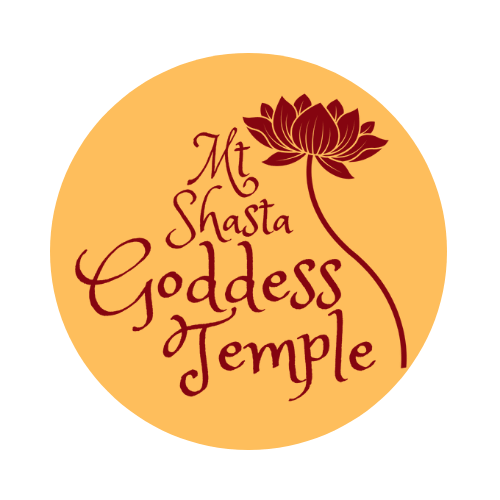
The Mt Shasta Goddess Temple is a global, devotional community of women honouring the feminine divine. It offers training, classes, workshops, rituals, retreats, and pilgrimages. I’ve been a member since 2021 and serve as a Skydancer Priestess and Sybil.
Joseph is my astrologer, based in Miami but available worldwide via Zoom. He has a gift for making astrology accessible, practical, and meaningful whether you’re a complete beginner or looking to deepen your understanding.
Coach Mia Z helps people advance in their careers, achieve their goals, overcome obstacles, and create sustainable work-life balance. As a longtime Witch and Priestess herself, she brings a deep understanding of our unique perspectives and challenges. She’s based in Florida but available remotely via Zoom.
Simon is a registered traditional and esoteric acupuncturist, practitioner of Traditional Chinese Medicine, and master in three Reiki disciplines. He’s based in Melbourne.
The Macedon Ranges Coven is a traditional Gardnerian Coven (Andred Line) based about an hour from Melbourne. This inclusive coven is open to seekers.
Public seasonal celebrations and lunar rituals in the Reclaiming Tradition. Core classes in-person and online.
Based in regional Victoria, Luke is a talented cartomancer and fortune-teller. He is also a practitioner of Traditional Witchcraft, an initiate in Gardnerian Wicca, and Anderson Feri witchcraft. Luke is open to seekers.
Fio is an initiate of multiple traditions, teacher, and writer offering divination, classes, workshops, and one-on-one mentoring. An avid traveller, Fio is available remotely.
Explore more on my blog
Articles on Paganism and Witchcraft that weave together practice, history, and lived experience.

Navigating the surge of professional witchcraft teachers
As witchcraft becomes more visible and profitable, how can seekers distinguish between trustworthy teachers and self-appointed experts?
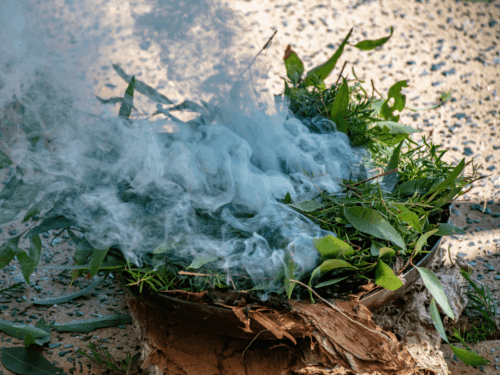
The enormous ongoing work of decolonising spirituality
On decolonising spirituality with care, accountability, and relationships that transcend buzzwords and performance, toward integrity and reverence.

#OcculTea: A conversation about social media witchcraft
My lengthy response to #OcculTea, a converation on “Social Media Witchcraft: Grifters, Aesthetics, Imposter Syndrome, Consumerism & Gatekeeping.”

